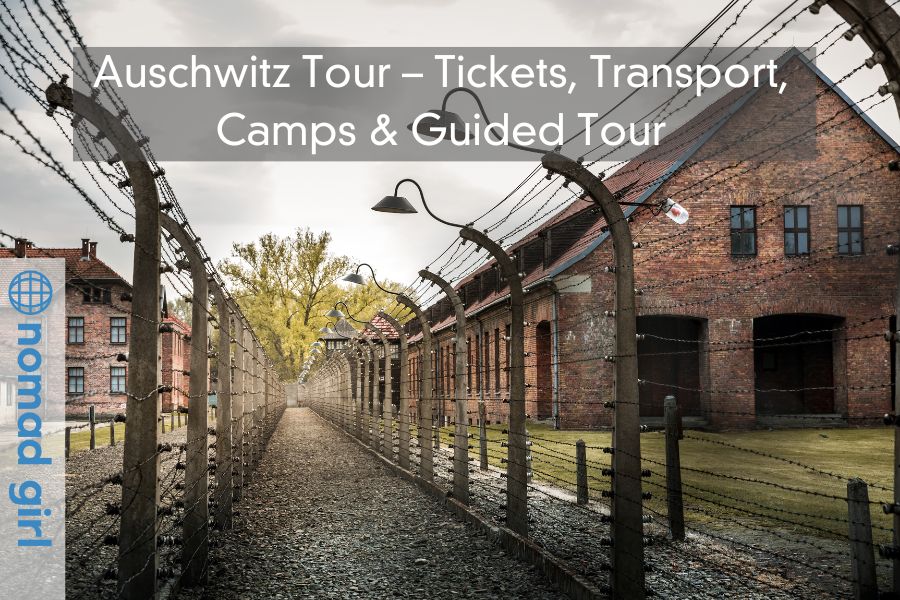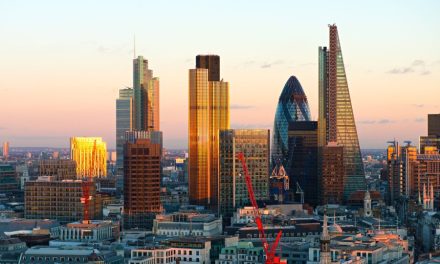Auschwitz has long been on my list of places to visit. Learning about the Second World War in school sparked my interest in understanding more about the camps. By visiting the site, I hope to deepen my knowledge and gain a better understanding of the historical context surrounding Auschwitz.
During my visit, I had a highly educational experience. The guide from the Auschwitz concentration camp tour was extremely valuable, providing a wealth of information on the camp itself, important landmarks within the camp, historical context about the war, and compelling stories about the prisoners.
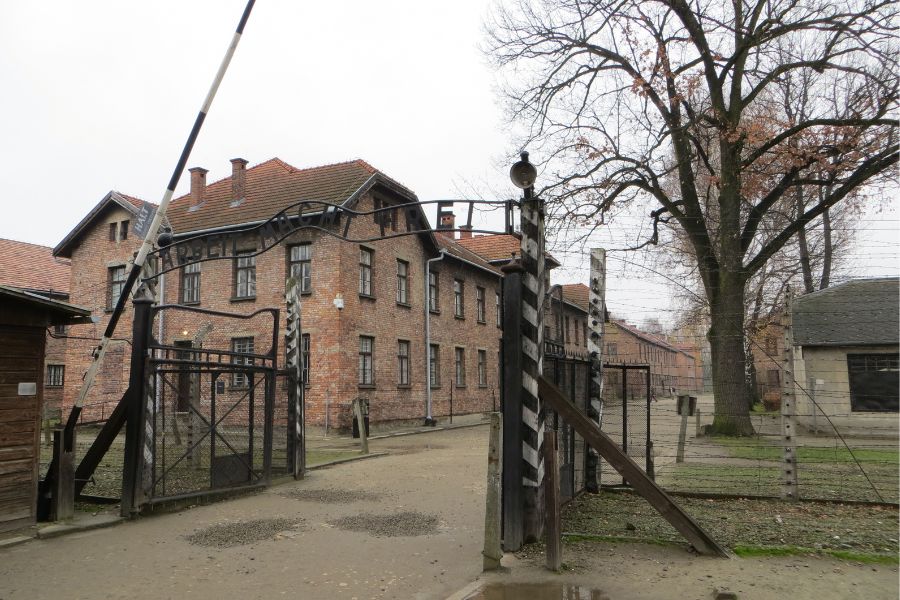
Getting there
If you are in Krakow and want to visit Auschwitz, you can easily reach it by heading to the main railway and bus station. From there, you can catch a bus from the downstairs platform. The cost of a one-way ticket for the bus is 12zl.
When visiting the camps in Krakow, you have the option of choosing between a minibus or a large coach. Based on my experience, the large coach provides a more comfortable and spacious ride compared to the minibus. The journey from Krakow to the camps typically takes around 1.5 hours by bus. Additionally, there is a convenient free shuttle bus service available between the two camps.
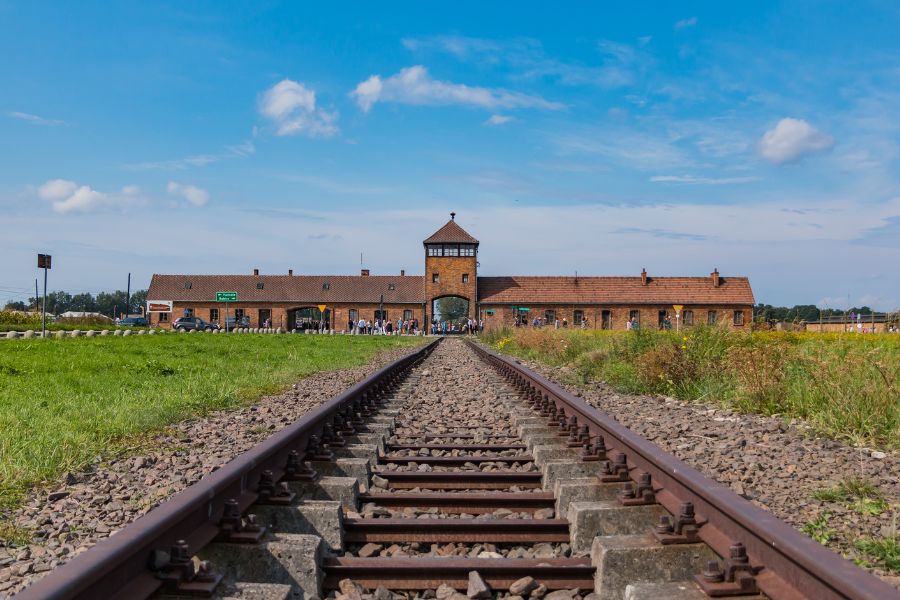
Tickets, guides
Visiting the Auschwitz memorial offers a valuable opportunity to gain knowledge and perspective. Both Auschwitz I and Birkenau are open to the public and admission is free of charge, except for the hours between 10 am and 3 pm.
If you prefer not to have a tour guide, there are specific times when you can explore the camps on your own. Outside of these times, you will need to arrive between 10 am and 3 pm and take a guide with you. You can book a guide at the front before going through security or inside near the headsets and information booth.
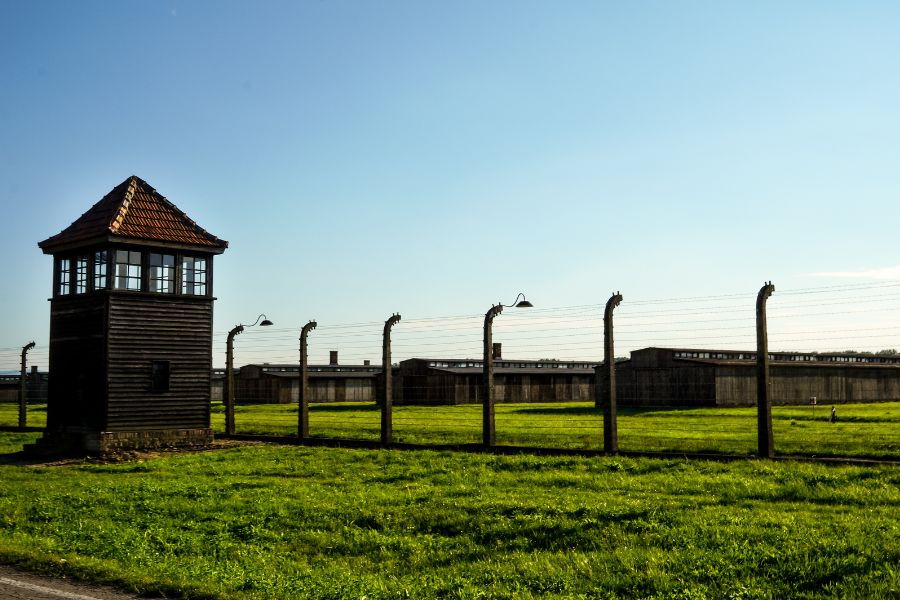
When you join a guided tour at the camp, which is available in multiple languages, the cost is 40zl. As part of the tour, you will be provided with headphones to easily hear your guide. Throughout the tour, you will be taken to both camps and informed about a wide range of facts, figures, and stories related to life at the camp, the people involved, the war, and the killings that occurred.
Guides are an invaluable source of information that greatly enhances the educational experience. I highly recommend joining a guide, as they provide in-depth explanations and help you fully understand and appreciate the sights you are viewing. Without a guide, you may miss out on important details and struggle to comprehend the significance of what you are seeing.
Auschwitz I is designed to resemble a museum, featuring numerous informational plaques, photographs, and articles on display. However, Birkenau does not provide the same level of informative content as Auschwitz I.
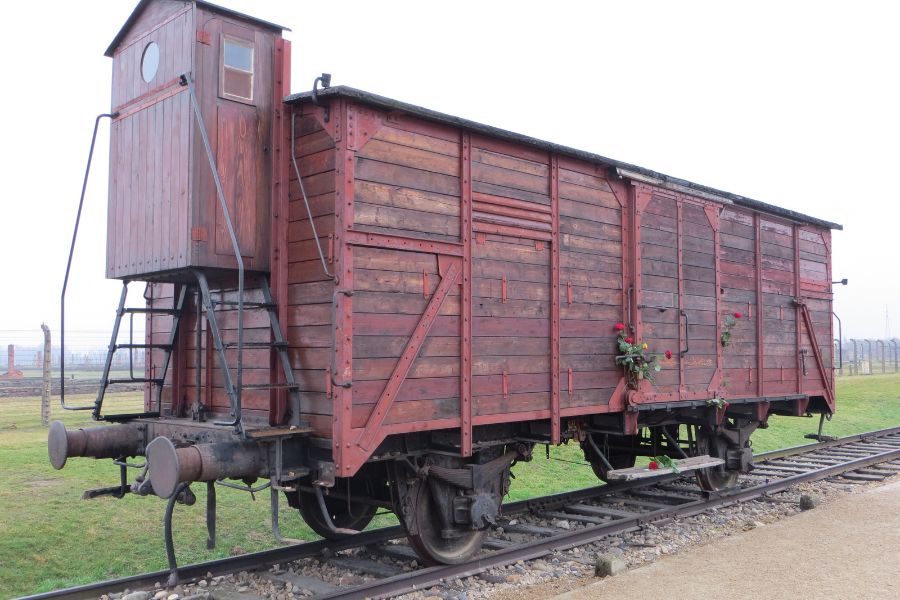
Entering
Upon arrival at the camps, I anticipated a chilly or significant experience. To my surprise, the entrance was organized into two lanes to efficiently accommodate visitors. As I explored the premises, I noticed that the walkways were divided by ropes, guiding the flow of pedestrian traffic. Considering that the camps receive over 1 million visitors annually, this approach is quite understandable.
In order to ensure safety, it is necessary to place all personal belongings through the X-ray machines and pass through the human scanning machines.
Please note that bags larger than the size of an A4 piece of paper are not permitted. If your bag exceeds this size, you will be required to store it in the luggage storage area for a fee of 3zl per bag. Alternatively, you may choose to use plastic bags for your belongings, although it may be necessary to use two plastic bags in this case.
Please note that the following information contains details about the camp conditions and what was observed during my visit. If you prefer not to read about this, please stop here.
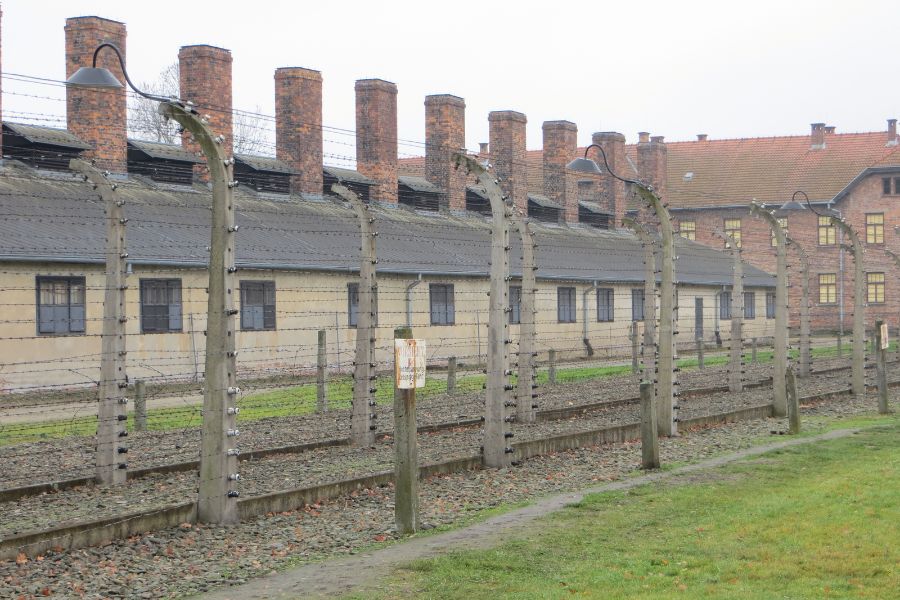
Auschwitz I
Auschwitz I is equipped with numerous information boards, photographs, and a wide array of artefacts on display. Each building, also known as a block, is dedicated to educating visitors about specific aspects of Auschwitz.
The area is bustling with numerous tours happening simultaneously. To ensure clear communication between guides and participants, tour groups use headphones amidst the presence of other groups within the same building.
The exhibit consists of two blocks. One block showcases the living conditions of prisoners, including toilets, washrooms, and sleeping rooms. The other block displays artefacts and personal belongings of prisoners that were recovered after the war, such as suitcases, glasses, brushes, bowls, and shoes.
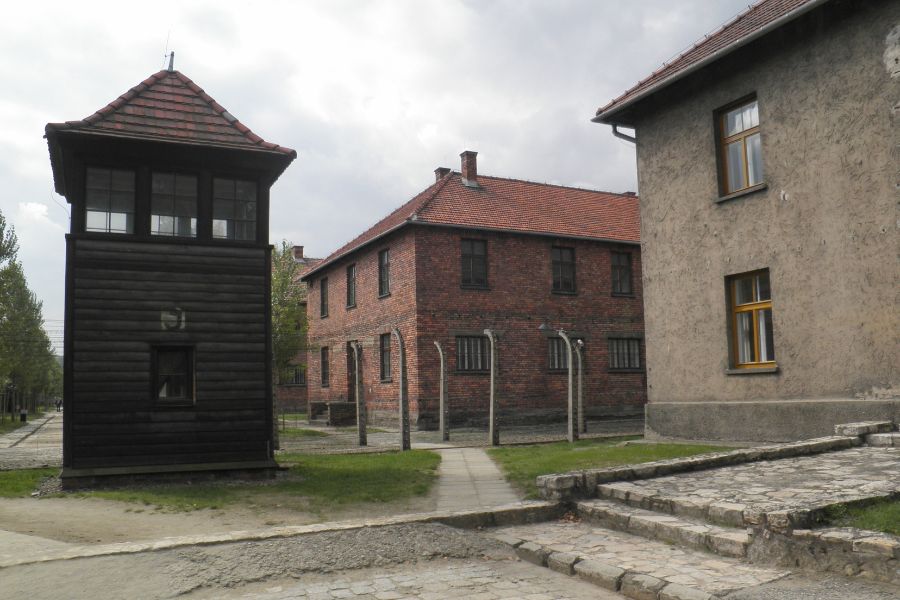
Block 11 at Auschwitz served as a punishment room and prison during the war. Walking through Block 11 can be a confronting experience. This block contained cells, a gas chamber in the basement, and standing-room-only cells where prisoners were prohibited from sitting down.
Block 10 served as the location for a series of experiments conducted by two German doctors during a dark period in history. Primarily focusing on sterilization experiments on Jewish women, these doctors also conducted various experiments on twin children.
The Death Wall is situated in the courtyard between Blocks 10 and 11. This space served as a firing wall during a dark period in history. Remarkably, the wall remains intact to this day. Our knowledgeable guide informed us that the windows on Block 10 were intentionally covered to ensure that no witnesses could see the horrifying acts of murder taking place.

Birkenau
When visiting Auschwitz I, visitors have the option to take a shuttle bus to Birkenau, which is another significant camp located nearby. The shuttle bus departs from the front entrance of Auschwitz I, close to the snack food bar along the road. The journey from Auschwitz I to Birkenau is a short distance of only 3km.
Birkenau, also known as Auschwitz II, was significantly larger than Auschwitz I. It gained the notorious label of an extermination camp due to the high number of mass murders that took place there.
At Auschwitz I, the train lines, entrance gates, and the platform where prisoners first arrived are still intact and easily recognizable. This platform is frequently seen in photographs of the camp.
On display at the platform is an authentic train carriage that was once used to transport people to the camp. This carriage served as a means of transportation for individuals coming from various parts of Poland and neighbouring countries.
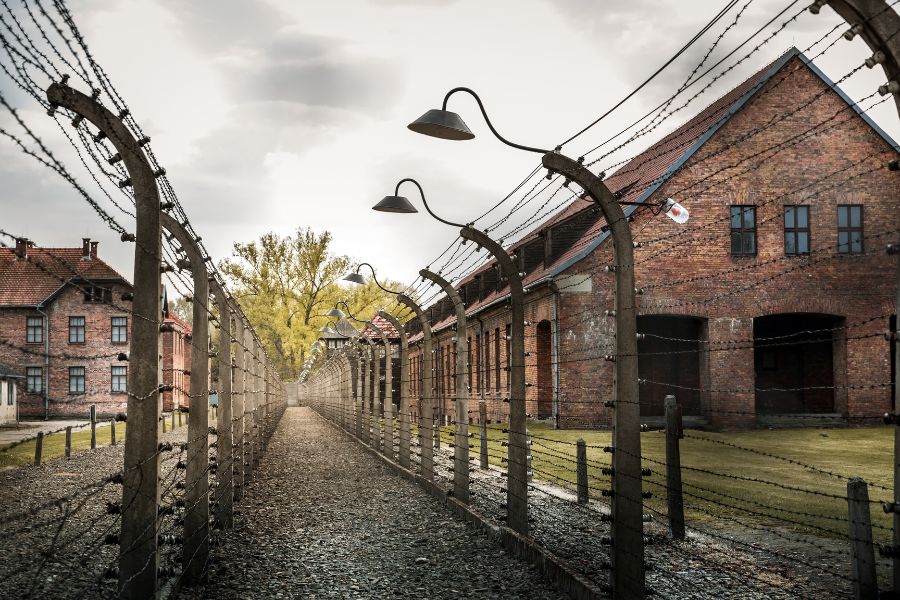
During the journey in this carriage, people used to spend up to five days without access to food, water, or a proper toilet. Instead, a bucket was provided in the corner for passengers to use as a makeshift toilet.
Before departing from their homes, individuals were informed that they would be relocated to specific camps. They were instructed to only bring their most valuable possessions, with a specific emphasis on labelling their suitcases, and there was a specified weight limit for the luggage that they were allowed to bring.
Upon arrival, passengers were instructed to leave their suitcases and belongings on the platform. They were then advised to undergo a shower or disinfection process before bringing their belongings to their designated residences. This measure was implemented by the Nazis with the intention of acquiring valuable items that could later be sold or distributed as gifts.
In this area, the carriage is located. At the platform, Nazi officials would greet the passengers, who believed they were required to take a shower before entering the camp. These officials would swiftly assess individuals based on their appearance and make immediate judgments regarding their ability to work.
In the concentration camps, individuals who were deemed physically capable of working, primarily young men, were assigned to the residential blocks. Conversely, those considered unfit for work, including women, children, the elderly, the sick, the disabled, or the injured, were immediately transported to the gas chambers.
During the Holocaust, gas chambers were disguised as mass showers, complete with functioning shower heads. Upon arrival at the camp, individuals were forced to undress and enter these underground chambers alongside hundreds of others. Tragically, they were killed within the first couple of hours.
Numerous chambers at the camp had suffered damage inflicted by Nazi officials, who deliberately destroyed them in an attempt to eliminate any traces of the crimes committed there.
The kitchen blocks and residential blocks in the area are still easily recognizable and well-preserved. During our guided tour, we were informed about the meals that prisoners would be served.
The provided meals consisted of a diluted coffee or tea for breakfast, a diluted vegetable soup for lunch (options included potato, cabbage, or beetroot), and a serving of stale bread for dinner. The bread was made using a combination of flour and sawdust, a cost-saving measure for food expenses.
The sleeping conditions in this place are quite astonishing. The prisoners sleep on wooden platforms that are stacked on top of each other, with each platform accommodating up to 10 people. Unfortunately, lice infestations were a major issue for the prisoners. One prisoner even remembered waking up covered in a swarm of lice.
In the prison, the bathroom conditions for the prisoners were extremely poor. With over 1000 prisoners, there was a single room containing only six toilets available. Furthermore, the prisoners were restricted to using the bathroom twice a day, for just a few minutes each time, along with all the other prisoners in their block.
In the camps, prisoners faced extremely limited access to bathroom facilities, being restricted to only two visits per day. Moreover, they had to share these facilities with over 1000 other people, resulting in a complete lack of privacy. The already challenging situation was exacerbated by the prevailing malnutrition and illnesses, which frequently led to prisoners suffering from constant diarrhoea.
The Children’s Block is an exhibit showcasing paintings created by Nazi officials before the children arrived. These paintings can be seen on the walls of the block. It is important to note that the majority of the children housed in this block were subjected to experiments or held as prisoners.


